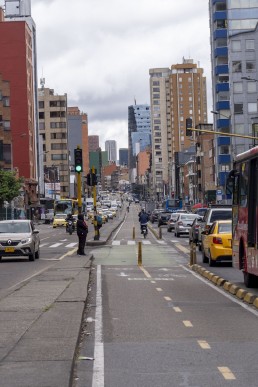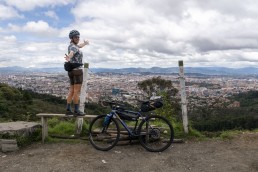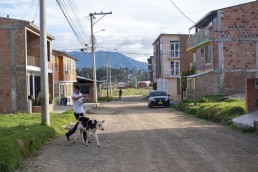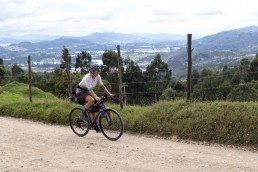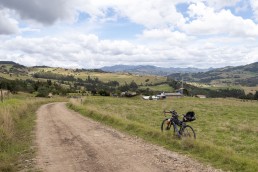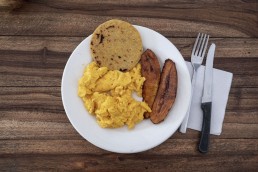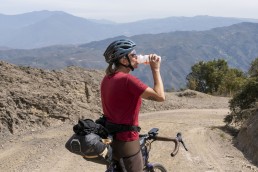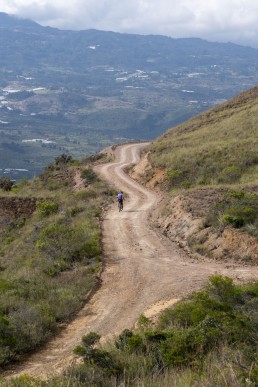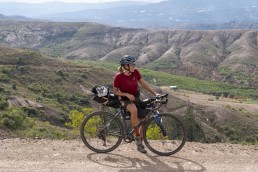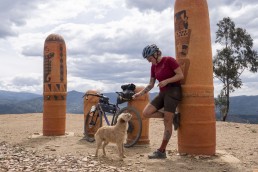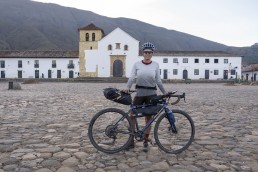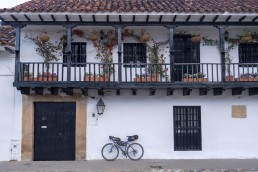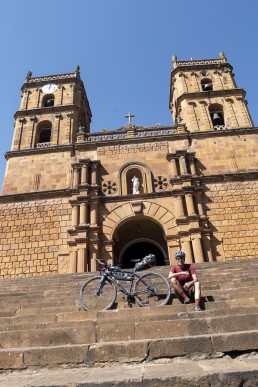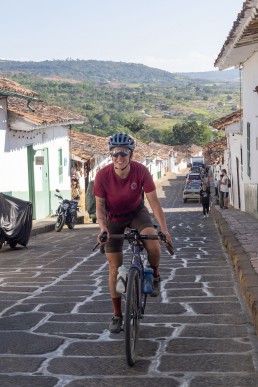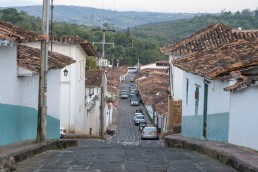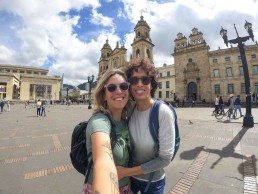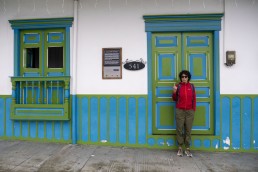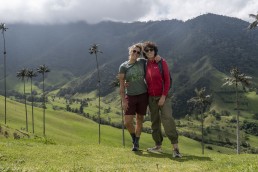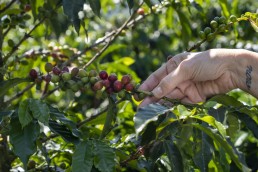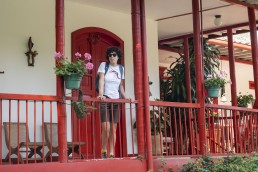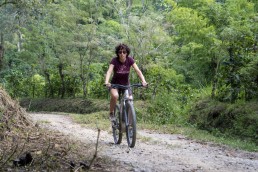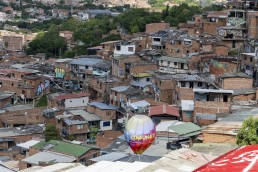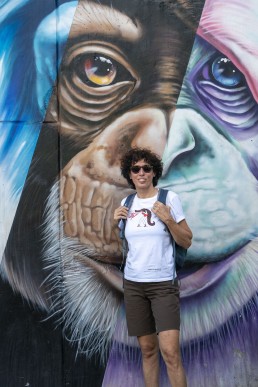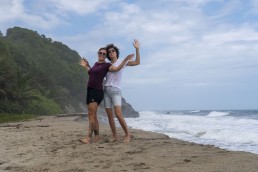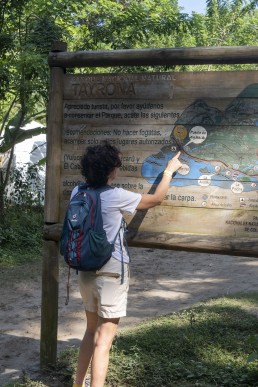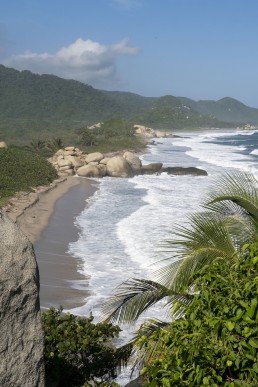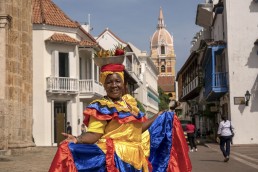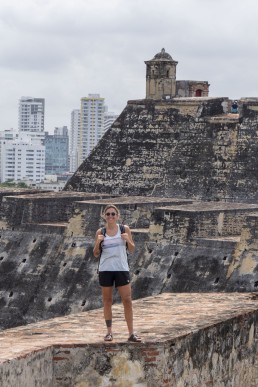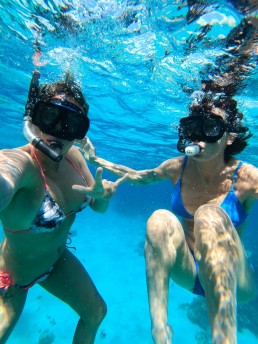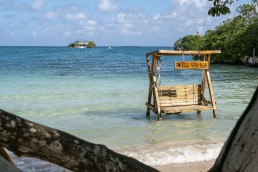Colombia is a fascinating country that has a lot to offer: from the Andes to the Caribbean Sea, an extraordinary nature and Amazon rainforest, as well as many beautiful colonial cities. And it’s always been a country in love with cycling, so you will never be alone on the road!
Some still believe it’s a particularly dangerous reality, due to its troubled past between guerrillas and drug trafficking. But it’s not like this: Colombia is a very friendly and hospitable country, with an incredible desire to relaunch itself. We never felt in danger and indeed we had some extraordinary experiences, both by bike and backpacking.
This journey is divided into two parts: the first I tackled by bike through the Andes, bikepacking solo from Bogotà to Barichara. The second with Linda backpacking to the most wonderful areas of Colombia. Below you will find my travel tips from the first part by bike and the GPX tracks (also on our Komoot profile), but also some tips to plan a backpacking journey through Colombia.
On this journey I didn’t bring my bike with me, but I rented it in Bogota. Oscar from Aganza Cycling personally builds simple but good steel or aluminum bikes to travel (and also sells them). I brought from home my Givi Bike bikepaking bags, which I am very comfortable with.
WHEN TO GO
Colombia alternates two seasons: dry and rainy. The first goes from December to January and from June to August, in these months it’s hot and rain is much less frequent. From March to May and from September to November it’s very rainy. The best period to travel to Colombia is from December to February. We were there in December.
DAY 1 BOGOTA
Bogotà is the capital of Colombia, it’s a huge city of over 10 million inhabitants, very busy and chaotic. Yet many inhabitants get around using bicycles: Bogota’s cycle path network is among the most extensive in the world, with 564km in 2022. Every Sunday there is what they call Ciclovìa: until 2.00 pm more than half of the streets are completely closed to car traffic and just for cyclists.
In addition to the most famous attractions, we recommend visiting the Fragmentos Museum, Espacio de Arte y Memoria created by the artist Doris Salcedo, and walking up to Monserrate. We stayed overnight at very nice and cheap Hotel Casa de la Vega.
DAY 2 BOGOTA/SUESCA: 85Km 860D+
I left Bogotà riding one of the must climbs for local cyclists: the Alto de Patios.As soon as the huge city disappears from view you enter another world, made of green mountains and valleys, grazing cows and messy villages. Suesca is a non-touristy but very pleasant place, at Meraki Comida Artesanal I had a delicious veggie burger! Bogotà is at 2,600m asl… you will notice it on the first climb!
DAY 3 SUESCA/GUACHETÀ: 44km, 980D+
Landscapes are wonderful and people welcoming, but get ready for gravel and tough climbs. The last stretch before Guachetà is famous for its coal mines, so you will meet a lot of trucks and dust. In Guachetà you can sleep for a maximum of €10 for a double room but forget about western breakfasts, in the morning you eat arepas, eggs and rice!
DAY 4 GUACHETÀ/VILLA DE LEYVA: 52km, 1.140D+
Still on gravel, in a world that is years away from Bogotà: there are small isolated fincas, donkeys on the street instead of cars, old women in typical costumes, mountains as far as the eye can see. Before arriving at amazing Villa de Leyva, famous for its square and cobbled streets, Raquirà and Patio de brujas are worth a stop.
DAY 5 VILLA DE LEYVA/OIBA: 117km, 1.680D+
After a massive descent, landscape and climate change completely: you will find yourself in the midst of tropical vegetation under a scorching sun. The stage is long but very nice, because it’s always on a beautiful paved road crossing many villages… where it’s possible to find fruit of all kinds! Oiba square is worth a visit.
DAY 6 OIBA/BARICHARA: 73km, 1.360D+
Still riding along Ruta Nacional 45A, which is very busy but amazing. The road is up and down until San Gil, where the climb to Barichara begins (it’s a famous climb and you will meet a lot of cyclist specially sunday morning). Colonial Barichara is beautiful and incredibly still quite authentic. If you have time, stop an extra day for the famous Camino Real hike from Barichara to Guane.
DAY 7 BARICHARA/SAN GIL: 24km, 460D+
Transfer stage to go back to San Gil and take the bus to Bogotà: loading bikes on buses it’s allowed and easy. If you have time stay longer in San Gil, the Colombian home of outdoor sports.
BACKPACKING COLOMBIA
Once I returned to Bogotà Linda joined me to explore Colombia backpacking.
Our first stop was Eje Cafetero, the greatest production area of famous Colombian coffee, which we reached with an internal Avianca flight to Armenia. It’s an Andean area at an altitude of around 1,500m asl with very green mountains and colorful villages. We visited the towns of Filandia and Salento, and went trekking in the amazing Cocora Valley, where the very tall wax palms (symbol of Colombia) grow. In Salento we recommend El Vjajero Hostel, a nice hostel that is part of a chain present throughout South America with different types of rooms and many activities.
Before moving by bus to Medellin we visited and stayed in a finca cafetera, the wonderful Hacienda Venecia, near Manizales. Zona Cafetera is perfect to be explored by bike, and also hosts the longest climb in the world (80km – 3,600D+): the Alto de Letras!
In Medellin don’t miss the sculptures in Plaza Botero and a visit to Comuna 13, a cluster of different neighborhoods in the north-western area of the city which has gone from being a very dangerous place due to guerrillas, gangs and drug traffickers, to a kind of open-air museum full of graffiti. A visit to Casa de la Memoria Museum is also highly recommended. We stayed overnight at Rango Boutique Hostel in the Poblado neighborhood, where most of the hotels and restaurants are concentrated.
With another internal flight we reached the Caribbean Coast, in Santa Marta. From there we explored Tyrona Park, keeping the lovely Hotel Senda Maloka Barlovento as our base. Finally we headed to the colonial pearl Cartagena de Indias, which truly captivated us with its colorful houses, restaurants and relaxed atmosphere. Before returning home, however, we treated ourselves to 3 days of total relax on Islabela, one of the many islands of beautiful Islas del Rosario archipelago, which is located just an hour by boat from Cartagena.

